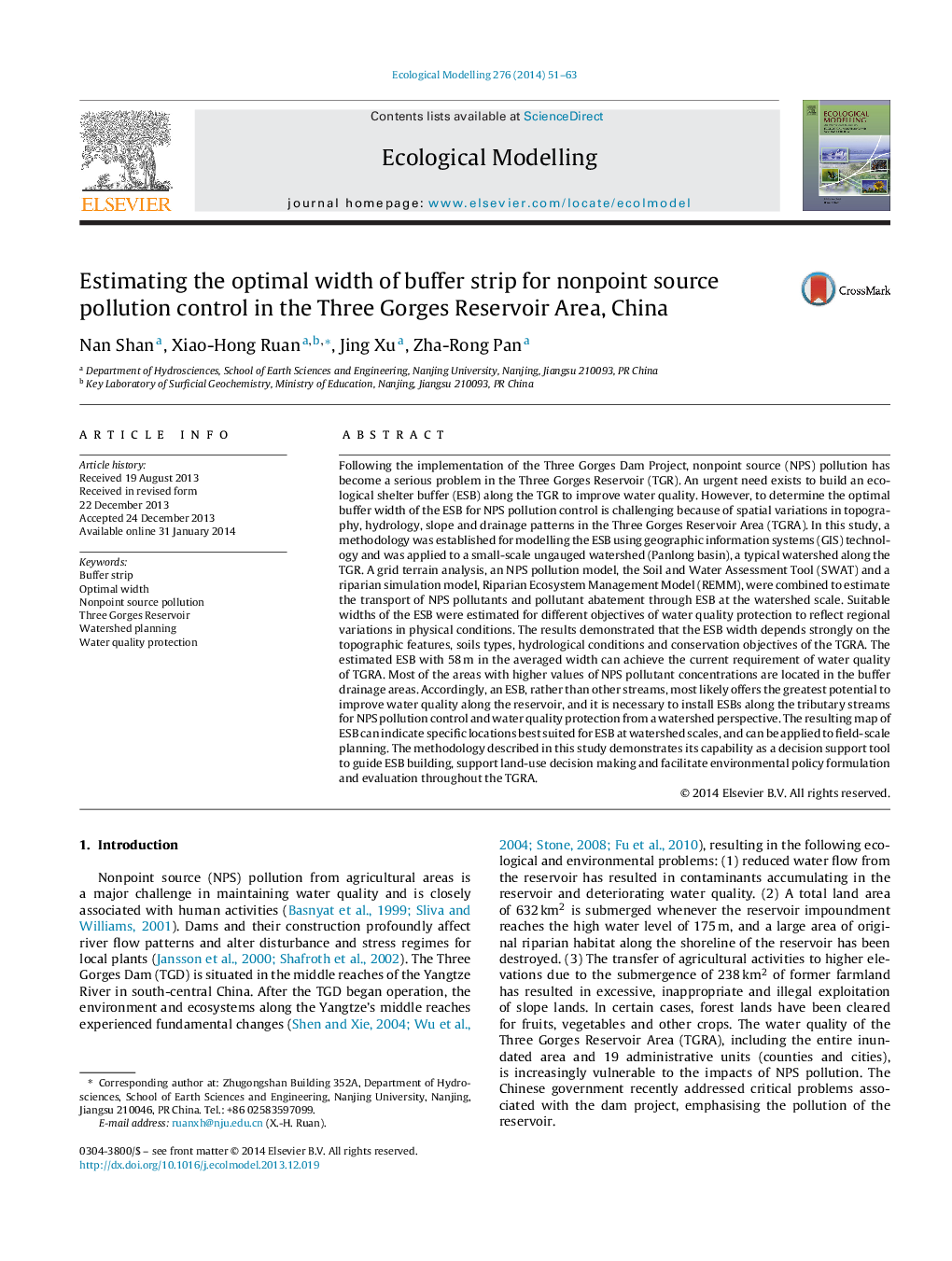| Article ID | Journal | Published Year | Pages | File Type |
|---|---|---|---|---|
| 6296891 | Ecological Modelling | 2014 | 13 Pages |
â¢We develop a computational framework to simulate the optimal width for building buffers along the TGR.â¢Models are combined to estimate the transport of NPS pollutants and pollutant abatement through buffers.â¢Suitable widths of buffers are estimated to reflect regional variations in physical conditions.â¢The resulting map of buffers can be applied to watershed-scale and field-scale conservation planning.
Following the implementation of the Three Gorges Dam Project, nonpoint source (NPS) pollution has become a serious problem in the Three Gorges Reservoir (TGR). An urgent need exists to build an ecological shelter buffer (ESB) along the TGR to improve water quality. However, to determine the optimal buffer width of the ESB for NPS pollution control is challenging because of spatial variations in topography, hydrology, slope and drainage patterns in the Three Gorges Reservoir Area (TGRA). In this study, a methodology was established for modelling the ESB using geographic information systems (GIS) technology and was applied to a small-scale ungauged watershed (Panlong basin), a typical watershed along the TGR. A grid terrain analysis, an NPS pollution model, the Soil and Water Assessment Tool (SWAT) and a riparian simulation model, Riparian Ecosystem Management Model (REMM), were combined to estimate the transport of NPS pollutants and pollutant abatement through ESB at the watershed scale. Suitable widths of the ESB were estimated for different objectives of water quality protection to reflect regional variations in physical conditions. The results demonstrated that the ESB width depends strongly on the topographic features, soils types, hydrological conditions and conservation objectives of the TGRA. The estimated ESB with 58Â m in the averaged width can achieve the current requirement of water quality of TGRA. Most of the areas with higher values of NPS pollutant concentrations are located in the buffer drainage areas. Accordingly, an ESB, rather than other streams, most likely offers the greatest potential to improve water quality along the reservoir, and it is necessary to install ESBs along the tributary streams for NPS pollution control and water quality protection from a watershed perspective. The resulting map of ESB can indicate specific locations best suited for ESB at watershed scales, and can be applied to field-scale planning. The methodology described in this study demonstrates its capability as a decision support tool to guide ESB building, support land-use decision making and facilitate environmental policy formulation and evaluation throughout the TGRA.
